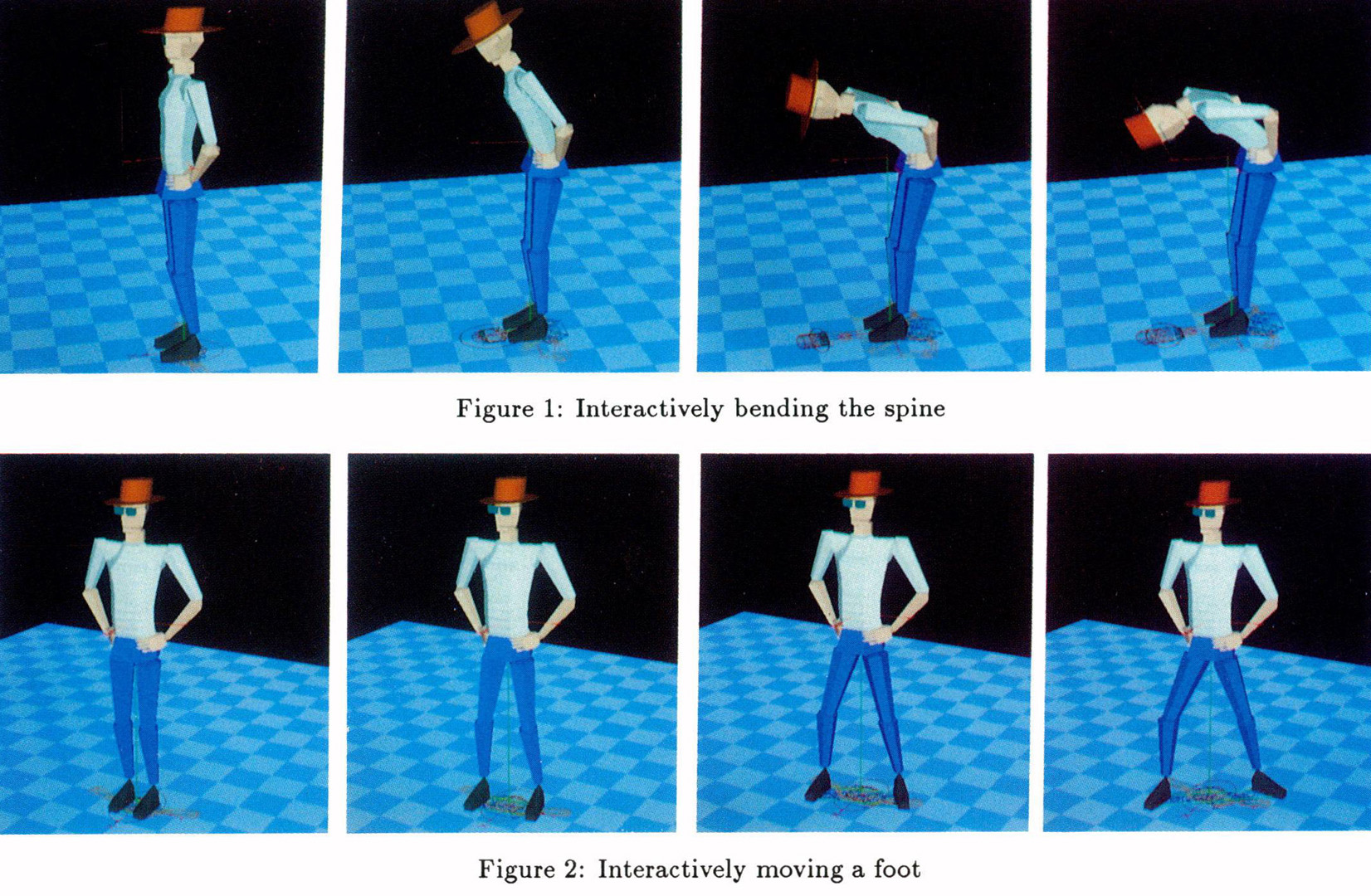“Interactive behaviors for bipedal articulated figures” by Phillips and Badler
Conference:
Type(s):
Title:
- Interactive behaviors for bipedal articulated figures
Presenter(s)/Author(s):
Abstract:
We describe techniques for interactively controlling bipedal articulated figures through kinematic constraints. These constraints model certain behavioral tendencies which capture some of the characteristics of human-like movement, and give us control over such elements as the figures’ balanced and stability. They operate in near real-time, so provide behavioral control for interactive manipulation. These constraints form the basis of an interactive motion-generation system that allows the active movement elements to be layered on top of the passive behavioral constraints.
References:
1. Alan H. Burr, ~Teleological Modeling,” in Making Them Move: Mechanics, Control, and Animation o/ Articulated Figures. N. Badler, B. Barsky, and D. geltzer (eds.):315-321, Morgan-Kaufmann, 1990.
2. Gary Monheit and Norman I. Badler, aA Kinematic Model of the Human Spine and Torso,” Computer Graphics and Applications, Vol. 11, No. 2, March, 1991.
3. Cary Phillips, Norman I. Badler, “Jack: A Toolkit for Manipulating Articulated Figures,” A CM/SIGGRAPH Symposium on User Interjhce So.ware: 221-229, B~nff, Canada, 1988.
4. Cary Phillips, Jianmin Zhao and Norman I. Badler, “Interactive Real-time Articulated Figure Manipulation Using Multiple Kinematic Constraints,” Computer Graphics 24(2):245-250, 1990.
5. Craig W. Reynolds, “Flocks, Herds, and Schools: A Distributed Behavioral Model,~ Computer Graphics, 21(4):25-34, 1987.
6. Jianmin Zhao and Norman I. Badler, aReal Time Inverse Kinematics with Joint Limits and Spatial Constr~ints,~ Technical Report MS-CIS-89-09, Department of Computer and Information Science, University of Pennsylvania, Philadelphia, PA, 1989.




